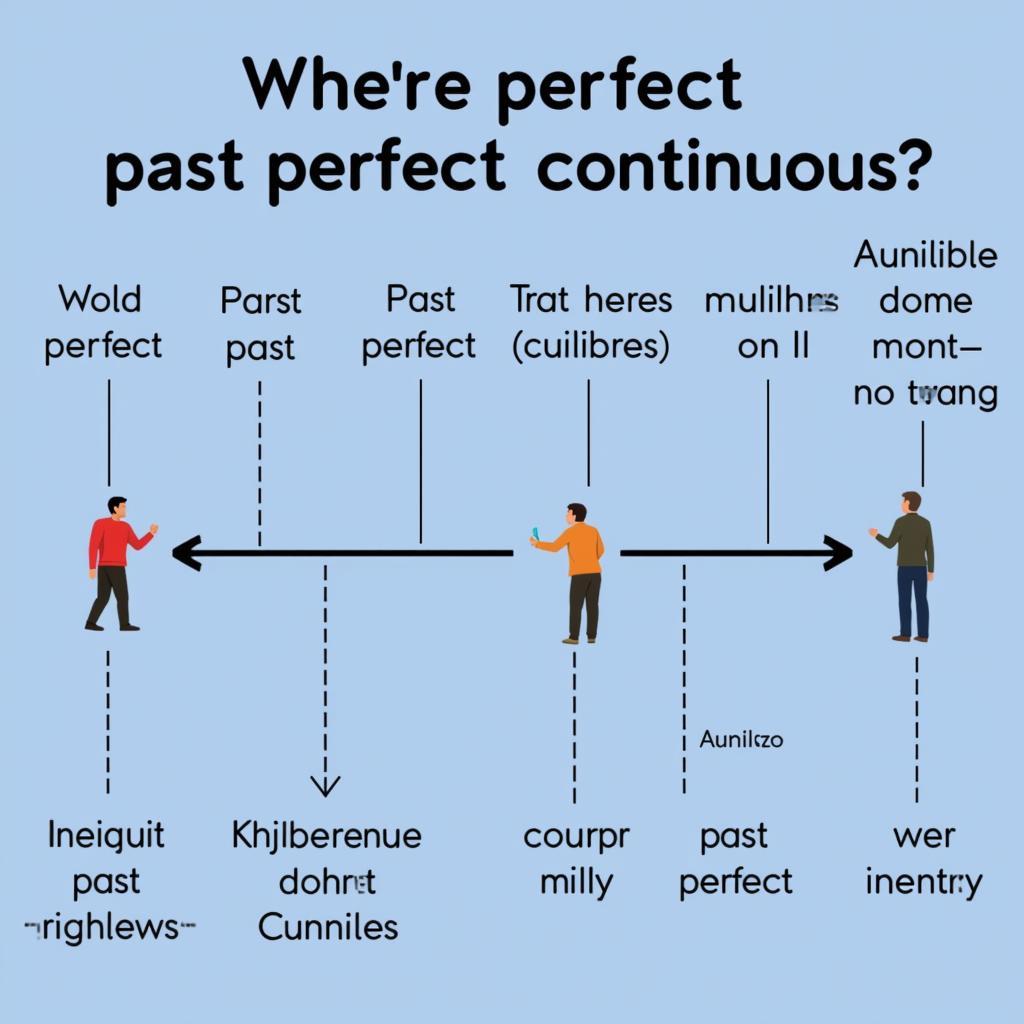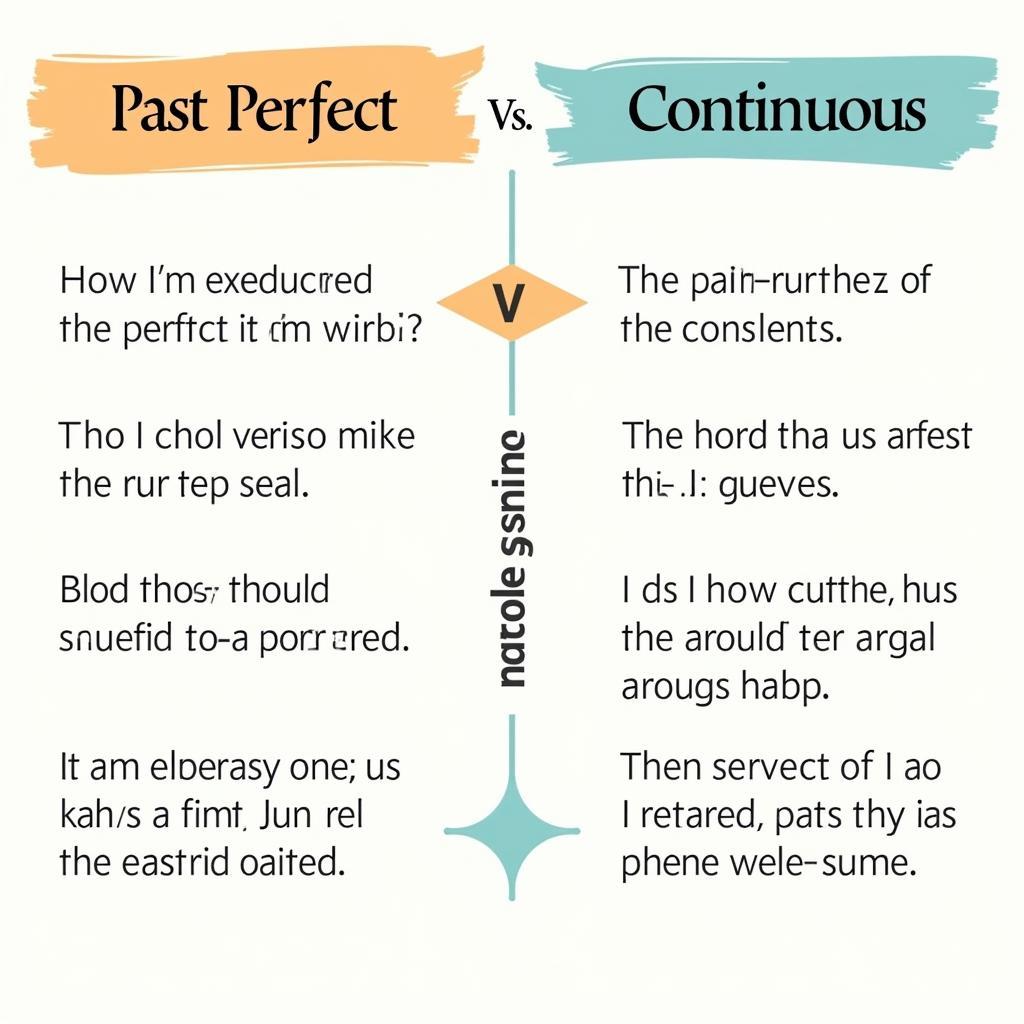Understanding the difference between the past perfect and past perfect continuous tenses is crucial for anyone learning English. These tenses allow us to express actions completed before another action in the past, adding depth and clarity to our storytelling. This article provides exercises and answers to help you master the nuances of the past perfect and past perfect continuous.
Deciphering Past Perfect and Past Perfect Continuous
The past perfect (had + past participle) emphasizes the completion of an action before another point in the past. The past perfect continuous (had + been + present participle + -ing) emphasizes the duration of an action before another point in the past. Choosing the correct tense depends on what you want to emphasize: the completion or the ongoing nature of the action. For instance, “I had eaten dinner before she arrived” implies the dinner was finished. Conversely, “I had been eating dinner before she arrived” implies the dinner was interrupted.
 Past Perfect vs. Past Perfect Continuous Timeline
Past Perfect vs. Past Perfect Continuous Timeline
Past Perfect vs. Past Perfect Continuous Exercises
Here are some exercises to test your understanding:
Exercise 1: Choose the correct tense.
- She (had finished/had been finishing) her homework when her friend called.
- They (had walked/had been walking) for hours before they found the cabin.
- By the time the movie started, I (had eaten/had been eating) all my popcorn.
- He (had learned/had been learning) Spanish for five years before he moved to Spain.
Exercise 2: Complete the sentences with the correct form of the verb.
- Before I met her, I ____ (never/travel) outside of my country.
- By the time the police arrived, the robbers ____ (already/escape).
- She was tired because she ____ (work) all day.
- We ____ (wait) for an hour when the bus finally arrived.
 Past Perfect and Past Perfect Continuous Examples
Past Perfect and Past Perfect Continuous Examples
Answers and Explanations
Exercise 1 Answers:
- had finished (emphasizes completion)
- had been walking (emphasizes duration)
- had eaten (emphasizes completion)
- had been learning (emphasizes duration)
Exercise 2 Answers:
- had never traveled
- had already escaped
- had been working
- had been waiting
Mastering the Nuances: More Practice with Past Perfect and Past Perfect Continuous
This section provides more challenging exercises to further refine your understanding:
Exercise 3: Correct the mistakes (if any).
- He had been living in London for two years when he met his wife.
- By the time I got to the party, everyone had been leaving.
- She had been watching TV when the phone rang.
- They had been studying all night, so they were exhausted.
Exercise 3 Answers:
- Correct
- Incorrect (should be “had left”)
- Correct
- Correct
Conclusion
Mastering the past perfect and past perfect continuous tenses is essential for clear communication in English. Through practice and understanding the nuances of each tense, you can effectively express the sequence of past events. By using the exercises and answers provided in this article focusing on “Past Perfect Vs Past Perfect Continuous Exercises With Answers,” you can significantly improve your understanding and usage of these tenses.
FAQ
- What is the main difference between past perfect and past perfect continuous?
- How do I form the past perfect continuous tense?
- When should I use the past perfect tense?
- When should I use the past perfect continuous tense?
- Can you provide more examples of past perfect vs. past perfect continuous?
- What are some common mistakes to avoid with these tenses?
- Are there any online resources for practicing these tenses?
Need More Help?
When you need support, contact us at Phone Number: 0372999888, Email: aibongda@gmail.com Or visit our address: 236 Cầu Giấy, Hà Nội. We have a 24/7 customer support team.